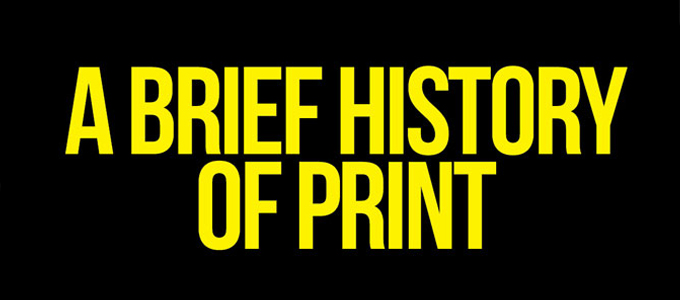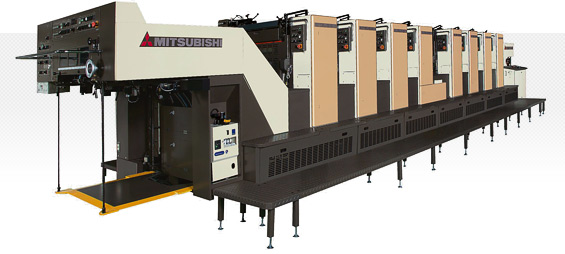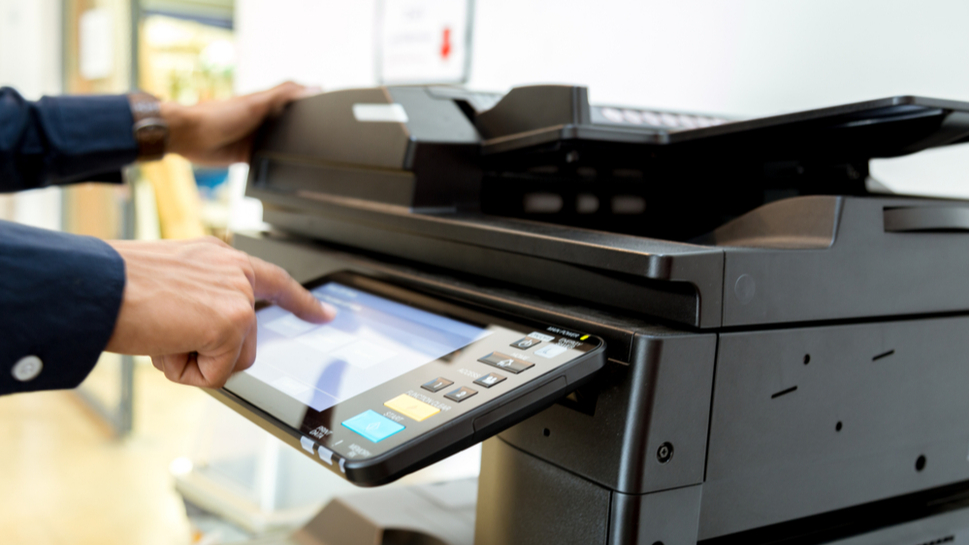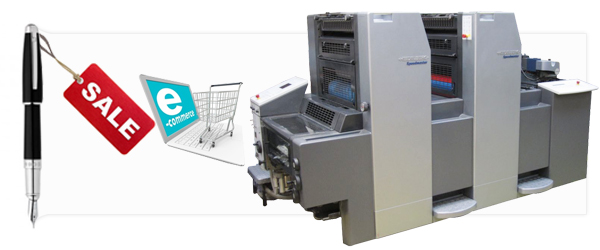The printing has emerged around 3000 BCE with the first copied image. At that time, the copying process was made using cylindrical seals used to print images on wax tablets. The origins of this process are found in Mesopotamian civilization, and its results are the first forms of art that have survived over time.
In China and Egypt were used methods similar tools, and in Europe and India, the printed textile preceded the print on paper or papyrus. At the appearance of first printing plates until the advent of digital printing at the end of last century, the evolution of printing has gone through a series of steps that have adapted to the requirements of the times and technologies.
In this chapter we will deal with the main stages of development pattern and geographical areas in which they occurred. Cultural mix had a significant contribution to current methods of print construction.
Wood block printing (200) is a method for text printing, images and other forms generally used in East Asia for printing on textiles, and later, under the influence of Buddhism, the technique spread to the paper.
As a method of printing on fabric, the first signs dates in China of 220 AD, during the Han Dynasty consisted of three flowers in three colors printed on silk. Adopted by Buddhism and used for printing on paper, the technique was used to spread translations of religious texts, and the oldest book printed with the help of wooden blocks was made on 11 May 868, according to ancient writings.
India through Buddhism has made a significant contribution to the development of printing by giving this activity a religious significance, which turns this activity into a sacred duty, for it was the most efficient method of transmitting and storing religious texts.
The need increasingly larger for editing and copying religious texts has led to the development of rapid techniques derived mainly from printing method using wax tablets prints.
In Europe, block printing technique is used mainly for printing on textile. The method, popular until the 1300s was mainly used for printing patterns and religious symbols on clergy clothes. With the spread of paper, after 1400, was passed, as in India, to the massive printing of religious texts. After the half century XIII, it moves to a more advanced technique, the movable printing. At the same time appears the stencil method used to print in color, especially the playing cards.
The movable printing (1040) – Printing and typography technique that uses metal parts cast in molds and finished had, on one side, letters or even prominent whole sentences.
The first form of movable printing occurs in China in 1040, and the pieces are made of porcelain. Metal parts appear 200 years later in Korean Goryeo Dynasty. None of these systems have been used widely since the manufacture of the parts with Chinese alphabet letters meant too much painstaking work.
Although oriental attempts are notable in the printing history, the one who revolutionized the technique and led the printing to a new level of development, opening the way to modernism was Johannes Gutenberg, a blacksmith from the german city Mainz. Around 1439 Gutenberg developed European movable printing technology and triggers its rapid spread across the continent in just a decade, marking the start of mass printing in Europe.
At the time, movable printing method represented a real revolution, primarily as a faster process than by wooden blocks, but also more durable. Metal pieces failed to provide a better quality of characters that have become more uniform. Moreover, the technique developed by Gutenberg could be used involving relatively low cost. Gutenberg’s invention is considered the most important achievement of the era and responsible for the spread and the further development of the printing.
Gutenberg’s innovations were not limited to the printing press and movable print. Blacksmith and goldsmith by profession, used his skills and developed an alloy metal known as pattern which ensures the quality and durability of printed materials. He also created a new type of ink which ensures a better quality of prints.
Gutenberg’s invention of printing led to the transformation of a relatively limited activity generally carried out behind closed doors of the churches, in an real industry with a very well defined organization. Have developed increasingly more printing houses that formed specialized personnel with well-defined functions in the process of printing.
Between 1,500 and 1,700 the printing industry grew and became increasingly dependent on the market. The content of the publication being the one that sells and a typography could not afford to print unprofitable editorial projects.
Intaglio (1430) – More special printing technique that involves the image incising on a mold generally made of copper or zinc.
To print an image on a intaglio matrix was ink pouring to its forms, then the excess was removed using a special fabric so that the ink remains only in the incisions. To print the form from the mold, place the paper over and passed through a press. This technique has survived until today, being used to print banknotes, official documents or collection stamp.
Lithography (1796) – Invented by the Bavarian author Aloys Senefelder, lithography is a specialized printing technique for smooth surfaces using a series of chemical processes for the image. The printing process is based on a hydrophobic chemical substance as a positive part of the picture and water as a negative part of it, so when you insert the support to be printed in special ink, the ink will catch the positive image and the water will wash the negative, removing it.
This method of printing images present a greater efficiency to more natural methods of print images such as engraving. Lithography is widely used today in almost every type of graphics printing on smooth support. Through lithography technique is obtained maps, posters, leaflets, packaging books or even newspapers.
Chromolithography, introduced concept and explained by the inventor of lithography Aloys Senefelder in the work A complete course in lithography published in 1818, it became the most popular method of printing in the nineteenth century thanks to a much faster technology, easier to use and offering better results, higher quality image wooden blocks printing methods to which was color introduced. This technique covers a series of lithographic color printing techniques but during its inception was still quite expensive since it involved the use of a lithographic stone for each color if wanted to obtain a high-quality images.
Offset Press (1870) is a printing method widely prevalent image that involves transferring the image to ink from a printing plate or a special mold to a special rubber blanket, and the last stage on the final surface of printing. The technique can be used in combination with lithography, but involves a series of specialized processes.
Serigraphy (1907) is an old technique used rudimentary by Japanese in printing clothing. The technique was taken over by the French, but modern serigraphy has its origins in Britain where Samuel Simon made his first patent in 1907. The idea was adopted in 1917 by John Pilsworth in San Francisco. Pilsworth used a form and serigraphy techniques much different from those used today.
Photocopying (1960), technology introduced by Xerox represented a real revolution, especially in terms of technology office supplies. It allowed the rapid multiple copies only with the push of a button, and soon became indispensable for carrying out an effective administrative activities in companies, regardless of the profile. The technology is still widely used today, but lost its popularity gradually as the result of increasingly emphasized digitization of documents.
Laser printer (1969) – invention belonging to Xerox that “crafted” on photocopying machine until they have obtained a laser printer. Responsible for the innovation was the researcher Gary Starkweather who, until 1971 managed to create a fully functional network of such printers. The new technology quickly escalated into a billion dollar business for Xerox.
Although Xerox invented the technology and created the first laser printer, IBM was the fastest in the monetization of what was at the time only a concept still unavailable to the public. Thus, IBM managed to release the first commercial version of the laser printer in 1976, called IBM model 3800.
At that time it was only used by companies for volume printing of documents and envelopes for correspondence. IBM 3800 was a rudimentary model, very high, which needed a dedicated room which makes it impossible for personal use. The printer is built for other purposes and had very good performance, the proof being the fact that an IBM 3800 series units are still in use.
The first compact laser printer compatible for use with a personal computer was taken off the market by the inventors of the technology in 1981, the model is called Xerox Star 8010. The disadvantage of the printer was given by the price of 17,000 dollars, which made it available only to a small audience in particular companies or institutions.
With the spread of computers, the first print truly for mass use appeared too. The HP LaserJet 8ppm was launched in 1984, after which began to appear similar models from various other manufacturers.
A notable role the laser printer had, was popularizing the activity concept of desktop publishing with the introduction of Apple Laser Writer for Macintoth and Aldous PageMaker in 1985.
Needle Printer (1970). It seems surprising that this occurred after the laser technology. Due to the relatively high price of laser printers, needles printing technology has become very popular in the 1970s and 1980s because of low price and versatility that they displayed, reaching as in the 1990s to become the most widely used printing technology for personal computers.
If producers like Digital Equipment Corporation and Centronics released the first needle printer models, the revolution in the field was made by Epson who made headlines with its MX-80 model. For this printer, the Epson managed to reinvent the technology by giving it a lower cost and higher quality for the printed materials.
Inkjet Printer (1976) became the most used printers today . The technology has experienced rapid optimization for personal use, at the time of appearence, although offering good performance, was not accessible, printers having very generous sizes and prices of tens of thousands of dollars were not too attracted for users to this solution.
The top producers who have dared to go with this technology were Epson, Canon, Hewlett-Packard. Later released other manufacturers in the bet with inkjet printing technology and today the global leaders in terms of sales are Canon, HP, Epson or Lexmark, not necessarily in this order.
Digital Press (1993) marks the beginning of the digital printing that brings several innovations over previous methods, more flexible, allowing printing on a wider range of supports, but also a much higher speed printing.
3D Print (2003) – the most advanced printing technique discovered to date. 3D printing technology is the process for producing a solid object from a digital model, the physical object being obtained by successive superposition of layers of material. This type of printing is made with special devices, that with the evolution of technology have become increasingly accessible to the public.
3D printing technique has become very useful in fields like jewelery, footwear, industrial design, architecture, engineering, construction, automotive, aerospace, medicine, stomatology or education.





